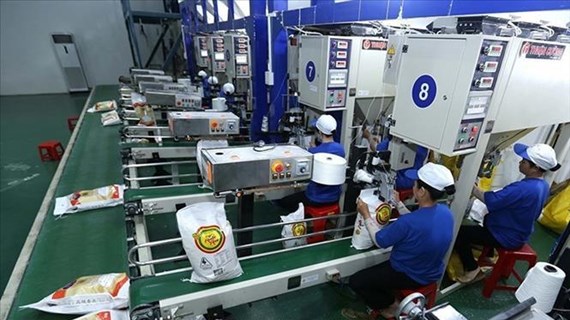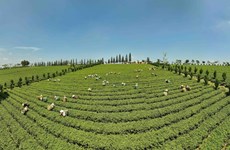Central province to promote swiftlet nest products
A workshop was held in Nha Trang city on July 10 to identify ways to
boost the production of salangane nests – a delicacy from the central
province Khanh Hoa.
A workshop was held in Nha Trang city on July 10 to identify ways to
boost the production of salangane nests – a delicacy from the central
province Khanh Hoa.
The event, held by the Khanh Hoa Salangane Nest Company and the Ministry of Science and Technology, was attended by nearly 100 delegates, including officials, scientific and technological experts, and salangane researchers.
Speakers underscored the necessity of in-depth studies on how to sustainably raise salanganes, a species of swiftlets, and harvest their nests. They also highlighted the potential impacts of climate change and human activities, and suggested solutions to protect the species.
Prof. Dr Mai Dinh Yen from the Hanoi-based Vietnam National University said Khanh Hoa needed to conduct comprehensive studies on the local salangane species and build reserves where the bird can breed in peace without human interference, which is crucial for the species’ survival and the economic success of nest products, especially at the national level.
Director of the Khanh Hoa company Le Huu Hoang called upon coastal localities throughout the country to devise investment strategies and consider developing breeding sites for salangane in favourable areas, helping Khanh Hoa expand salangane breeding and nest harvesting.
The workshop was part of the on-going 2015 Nha Trang Sea Festival, which ends on July 14.
The salangane lives in caves on limestone cliffs and makes nests using its own saliva. The nest is a popular but an expensive traditional dish which is believed to have health benefits.
Khanh Hoa is home to the largest salangane population in Vietnam.
The Khanh Hoa Salangane Nest Company, tasked with developing and harvesting salangane nests, now owns 169 salangane caves on 32 islands.
In 2014, it harvested more than 3.38 tonnes of salangane nests, the main ingredient in a number of products that are exported to 21 countries and territories around the world.-VNA
The event, held by the Khanh Hoa Salangane Nest Company and the Ministry of Science and Technology, was attended by nearly 100 delegates, including officials, scientific and technological experts, and salangane researchers.
Speakers underscored the necessity of in-depth studies on how to sustainably raise salanganes, a species of swiftlets, and harvest their nests. They also highlighted the potential impacts of climate change and human activities, and suggested solutions to protect the species.
Prof. Dr Mai Dinh Yen from the Hanoi-based Vietnam National University said Khanh Hoa needed to conduct comprehensive studies on the local salangane species and build reserves where the bird can breed in peace without human interference, which is crucial for the species’ survival and the economic success of nest products, especially at the national level.
Director of the Khanh Hoa company Le Huu Hoang called upon coastal localities throughout the country to devise investment strategies and consider developing breeding sites for salangane in favourable areas, helping Khanh Hoa expand salangane breeding and nest harvesting.
The workshop was part of the on-going 2015 Nha Trang Sea Festival, which ends on July 14.
The salangane lives in caves on limestone cliffs and makes nests using its own saliva. The nest is a popular but an expensive traditional dish which is believed to have health benefits.
Khanh Hoa is home to the largest salangane population in Vietnam.
The Khanh Hoa Salangane Nest Company, tasked with developing and harvesting salangane nests, now owns 169 salangane caves on 32 islands.
In 2014, it harvested more than 3.38 tonnes of salangane nests, the main ingredient in a number of products that are exported to 21 countries and territories around the world.-VNA












